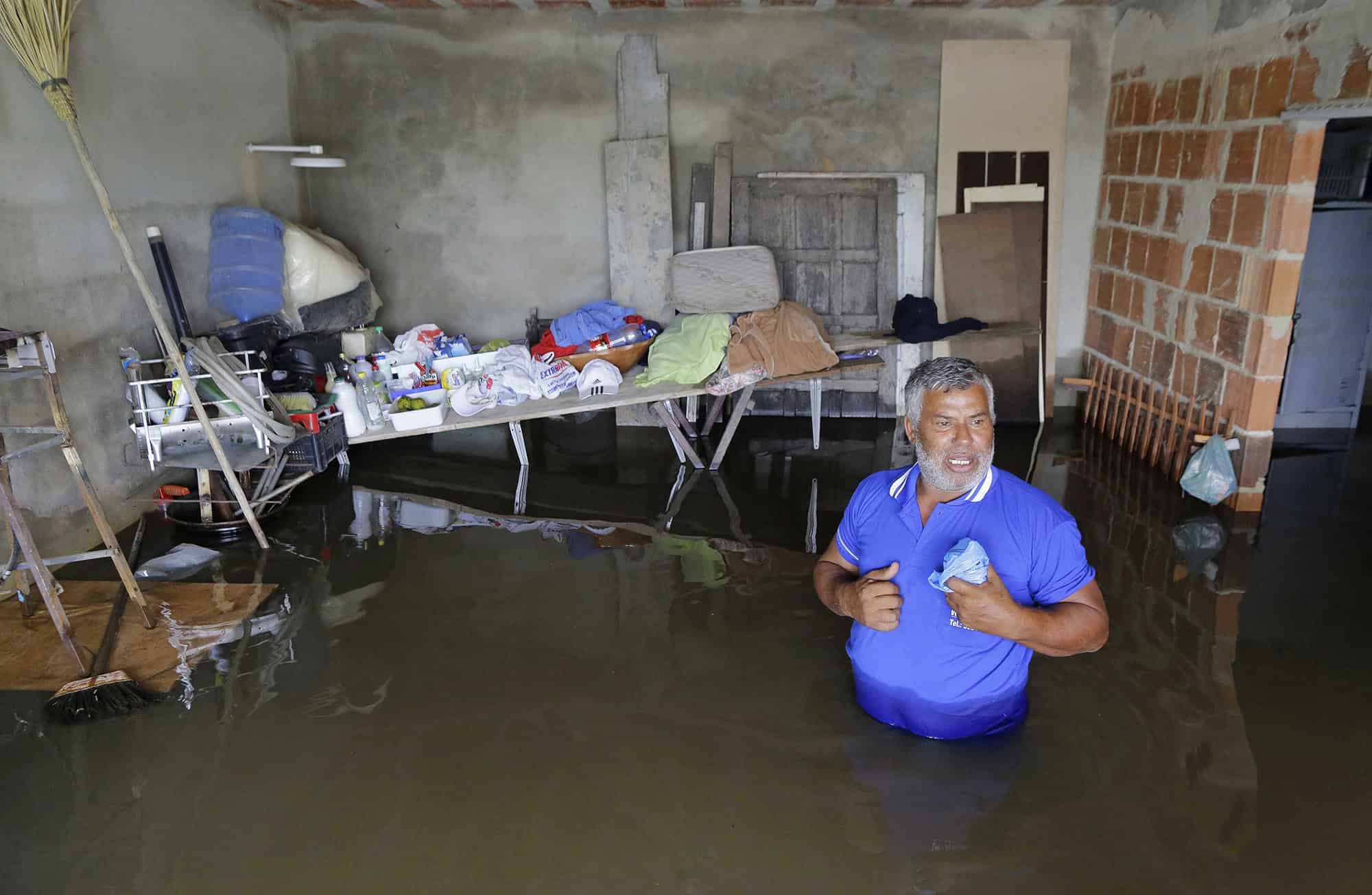Natural disasters seriously affect the economies of Latin American countries. But the region can become a global leader in promoting green solutions.
2023 has cost Latin American economies $20 billion in natural disaster damage, the highest since Hurricane Maria hit Puerto Rico in 2017.
In terms of numbers, the regional impact and cost are consistent with similar events in other parts of the planet. According to the World Economic Forum, global economic losses associated with climate and water extremes reached US$1.48 trillion in the decade ending in 2019: a 47.9% increase from the previous decade. However, compared to other regions, Latin America has a unique opportunity to harness its natural wealth and become a hub of economic opportunity through green solutions at comparatively lower transition costs—if it can accelerate efforts coordinated both locally and regionally.
The region faces the economic impacts of rising temperatures, changing weather patterns and an increase in the frequency of natural disasters. Slow government action and a lack of coordinated action are the main obstacles preventing several Latin American countries from moving to the forefront of the global ESG agenda.
“Without a decision to coordinate action along a specific path, we risk missing the biggest economic opportunity for Latin America this century,” says Marina Canzado, head of Converge Capital, which has worked for 15 years to bring investors and corporations together. and ESG/green economy solutions in the region.

system.
Ana Lucie Grizzi, EY Partner and Deputy Leader of Sustainability and Climate Change in Latin America, emphasizes the need for greater government action.
“We still need solutions that become public policy rather than government policy,” she says. “The transition to a low-carbon, bio- and circular economy offers enormous regional opportunities. We have natural capital here, both in quantity and quality, and this could give us a leading position.”
On the way to harm
According to the Boston Consulting Group (BCG), if the world complies with the Paris Agreements by 2030, limiting temperature rise to no more than 1.5°C by 2100, the world will suffer less than 8% of GDP losses due to natural disasters and climate change. But at current levels, temperatures will rise by 2.9°C by then, causing losses estimated at 24% of the global economy.
Latin America has already suffered in many ways.
“If we look at Colombia, the loss of arable and forested land is one of the biggest risks,” says Bogota-based economist Jorge Farfan, a partner at Brazilian venture capital firm KPTL. “We lose an average of 300,000 hectares of land every year, especially in the Amazon and forests, due to environmental degradation. We are also greatly impacted by stronger and more frequent Caribbean tropical storms and hurricanes reaching the southern regions of the region. Chile and Mexico are already suffering from severe drought, turning large swaths of land into barren deserts unsuitable for anything at an alarming rate.”
Chile and Mexico, two of Latin America’s most important economies, are among the 30 countries most exposed to underlying water risks, the highest in the Western Hemisphere, while Peru ranks 32nd, according to a study by the World Resources Institute.
Flooding in Brazil’s southernmost state of Rio Grande do Sul in April and May illustrates this problem.
In just five days, cities and towns across the state received rainfall equal to one-third of the annual average. The results were catastrophic. An EY study found that 90% of the state’s municipalities were affected; 30% declared a state of emergency. Civil authorities estimated the death toll at 183. The damage to public and private infrastructure was so extensive that the Brazilian Confederation of National Insurance Companies classified the disaster as the largest claims event in Brazilian history.
Much of the blame, according to Cançado, lies with the expansion over the years of monocropping in Rio Grande do Sul, especially soybeans, which has negatively impacted the soil and increased the likelihood of flooding.
“The consequences of this incident go beyond the immediate tragedy,” she says. “Considering a potential event like this now impacts and changes the market value of assets, the feasibility and price of insurance, how bids for public infrastructure concessions should be written and priced, and what municipal spending priorities should be.”

Climate and natural risks include physical impacts that need to be measured using risk analysis methodologies, notes EY’s Grizzi, and need to be reconsidered to include future opportunities.
“Risks associated with changing weather and nature can be managed through either mitigation or adaptation,” she says. “The impact extends throughout the entire economic system, which is why financial institutions are also concerned about the systemic risks associated with contamination or holding assets and investments in places and companies that do not meet the goals of the transition.”
Green Growth Leaders
The good news is that Latin America has the potential to become a global leader in green solutions; Brazil is already the region’s brightest star, with the potential to double annual foreign direct investment and attract up to $3 trillion by 2050, according to BCG. at scale, while protecting and restoring biomes: distinct geographic regions with specific climates, vegetation, and wildlife. And it could become a key player in providing competitive green industrial products and services.
Brazil will host the COP30 climate summit next year, Grizzi notes; her own achievements are mixed, but she remains hopeful.
“We still have a lot of good projects in Congress,” she says, “for example, the Brazilian Emissions Trading System, which will operate with them. But Brazil still lags behind the global north; they had more time to adapt, although they faced even more natural resource constraints. Although Brazil is still catching up with Europe’s CBAM (Carbon Border Management Mechanism) or the US Inflation Reduction Act, the end results will still be positive and could place the country among the global players.”
BCG ranks Brazil as global leader in profiting from regenerative agriculture at scale; first, as a provider of carbon offsets through nature-based solutions that are projected to generate up to $50 billion in local revenue by 2030; and as a protagonist in the production of wind, solar and green hydrogen. Brazil is expected to become a leader in the development of biomass fuels and a global hub for low-carbon industrial products that benefit from clean energy, abundant natural resources and circularity.
“Brazil is home to 40% of the world’s biodiversity and one-third of global biomes, but we don’t yet have a single global product that directly uses these resources,” says Danilo Zielinski, head of the KPTL Forest and Climate Fund.
KPTL just completed a round of investment in a company that uses molecules only available on Amazon to create new products aimed at prolonging longevity and promoting health in old age. “The opportunity to explore this biome in a sustainable way that protects the forest is huge,” Zielinski says, “and the economic incentive to do it is there, too. It is much more profitable to get such products and science from the Amazon than to simply clear it for grazing.”
Robust AI Processing
Brazil could also see increased international investment in relocating or building large data centers in the country’s northeast, much of it based on advances in generative artificial intelligence, according to the Santander study. A simple query in ChatGPT requires 10-15 times more power than a query made through conventional search engines. Brazil could capture a significant share of the $440 billion market simply because it can offer what most other countries cannot: cheap, clean, renewable energy and water to cool data centers on a large scale. It also has geographic proximity to Chile, a global supplier of copper needed for critical electrical applications needed for servers.
“We have all the industry assets in Latin America in general,” says Cançado, “and in Brazil in particular: mining, energy, food, agriculture. We are the only region capable of sustainably developing all of these assets while transitioning to net-zero carbon emissions. And we can do that by driving development, driving economic growth, creating jobs and generating income.”
Her conclusion could not have been more poignant.
“The only thing we’re missing at the moment is a shared vision and a regional call to action,” she says. “We need to decide whether we want to be a global power and a global center for solving climate problems on the planet. This decision must be communicated to governments, the private sector and society in all our countries. But we need coordination. The risk is that if we don’t do this, we will again become the region that could have been but never was.”
